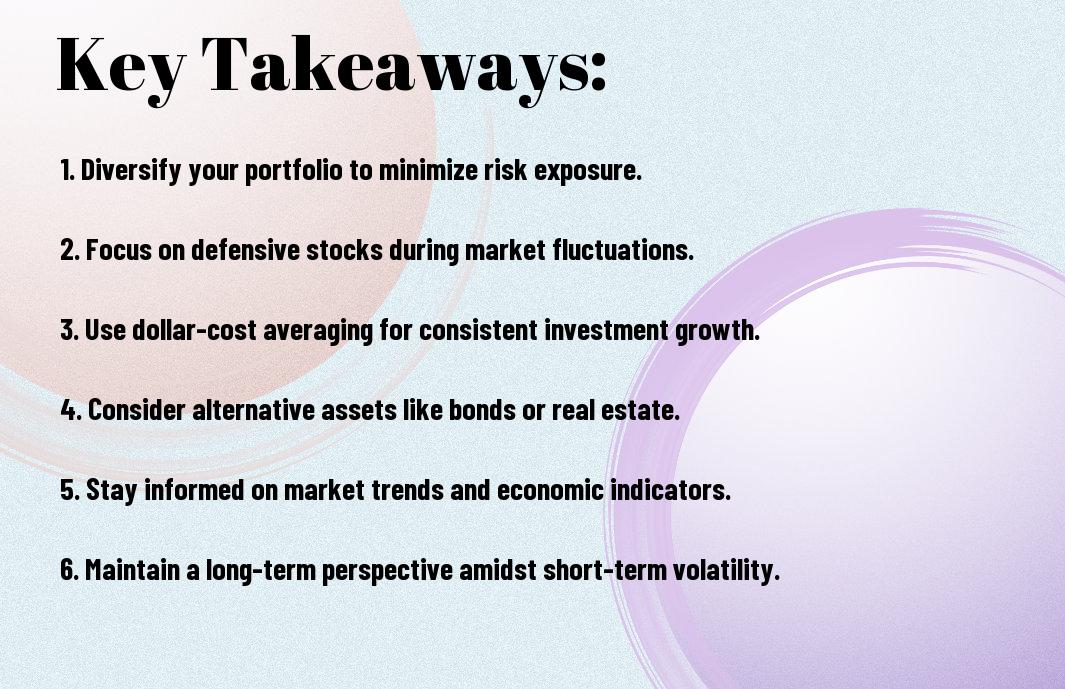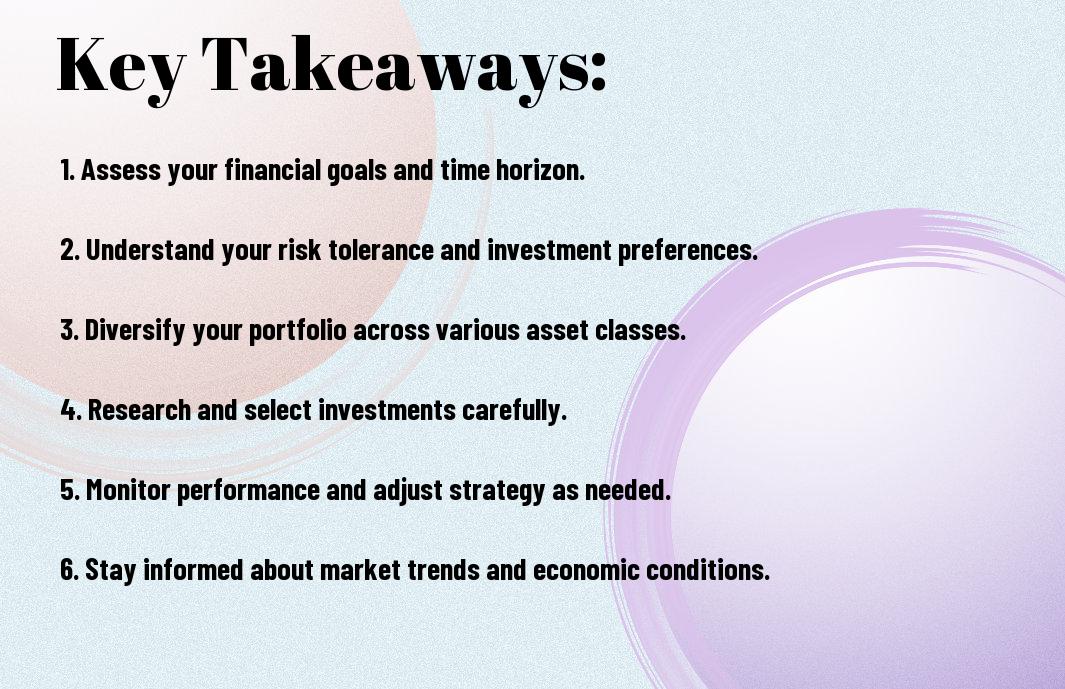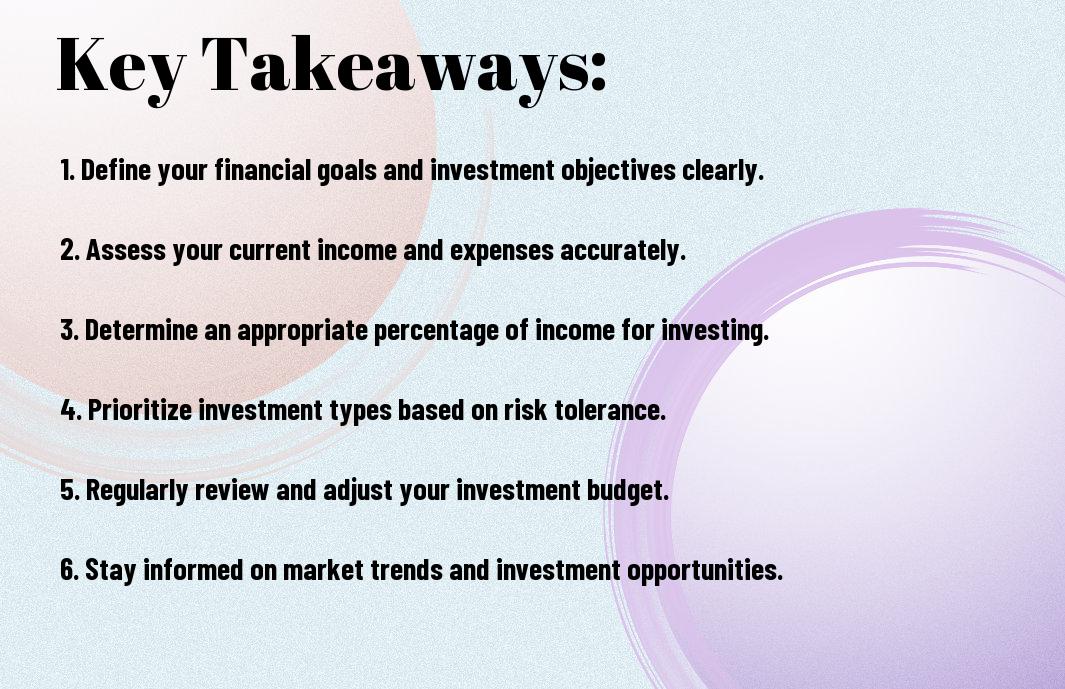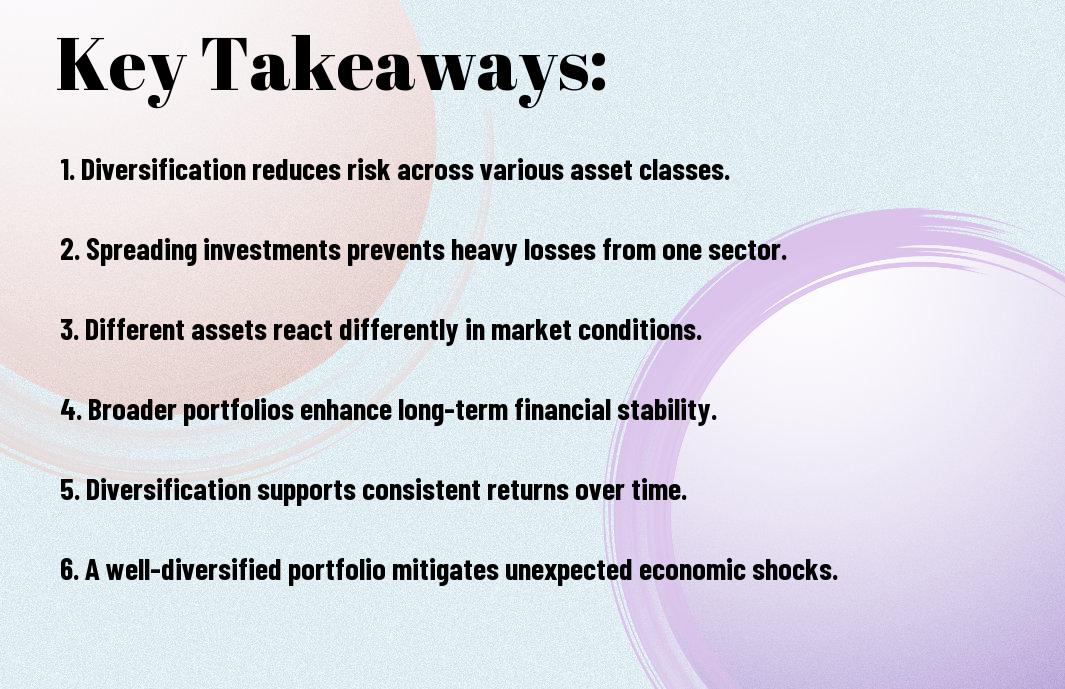Just when you think the market might stabilize, fluctuations can catch you off guard. In such unpredictable conditions, knowing how to adapt your investment strategies is necessary for protecting your portfolio and seeking growth. This guide will equip you with effective approaches that can help you navigate a volatile market, potentially turning uncertainty into opportunity. By implementing these strategies, you can enhance your financial resilience and make informed decisions tailored to your investment goals.
Key Takeaways:
- Diversification is important to mitigate risk; spreading investments across various asset classes can shield against market fluctuations.
- Emphasize quality over quantity; choose companies with strong fundamentals and solid track records to weather downturns.
- Consider dollar-cost averaging; investing a fixed amount regularly can reduce the impact of volatility and lead to better long-term outcomes.
- Stay informed about market trends and economic indicators; keeping abreast of developments can aid in making timely investment decisions.
- Maintain a long-term perspective; avoiding panic selling during market downturns can lead to improved financial results over time.

Understanding Market Volatility
Your understanding of market volatility is necessary for navigating investments effectively. Market volatility refers to the degree of variation in trading prices over time, indicating the level of risk associated with a particular investment. High volatility may present both opportunities and challenges, affecting your decision-making process. Being aware of market fluctuations enables you to adopt strategies that can safeguard your investments and enhance your potential returns.
Causes of Market Fluctuations
One of the primary causes of market fluctuations is economic indicators, such as unemployment rates and inflation. These factors provide insights into the overall health of the economy, influencing investor sentiment and behavior. Political events, such as elections or policy changes, also contribute to market uncertainty, causing rapid price changes as investors adjust their expectations. Additionally, global events, including natural disasters or international conflicts, can create shifts in market dynamics, impacting various sectors.
Historical Perspectives on Volatility
One effective way to grasp market volatility is by examining historical perspectives on past market behaviors. Analyzing historical data showcases how markets have reacted during different economic cycles, allowing you to identify patterns and potential future scenarios. Volatility has been a consistent feature of financial markets, influenced by various events such as economic crises, technological advancements, and geopolitical tensions. Understanding these historical trends better prepares you to navigate today’s market challenges.
The history of market volatility reveals cycles of boom and bust that occur in economic systems. For instance, the Great Depression in the 1930s showcased extreme volatility as markets plummeted and then gradually recovered over the decades. Similarly, the tech bubble in the late 1990s highlighted how rapid innovation could lead to soaring stock prices, followed by sharp declines. By studying these historical events, you can gain valuable insights into the factors that drive market swings, helping you make informed investment decisions in the present and future.
Defensive Investment Strategies
It is necessary to adopt defensive investment strategies during volatile market conditions to protect your portfolio. These strategies focus on minimizing risk and enhancing stability in uncertain times. You might want to explore Strategies To Help Deal with Market Volatility that can aid in navigating through turbulent markets.
Asset Allocation Techniques
For effective risk management, employing asset allocation techniques is vital. By diversifying your investments across various asset classes, such as stocks, bonds, and cash equivalents, you can reduce potential losses while aiming for steady returns.
Investing in Defensive Stocks
Strategies that involve investing in defensive stocks can offer you greater security during market downturns. These stocks typically belong to sectors that remain stable regardless of economic conditions, such as utilities, healthcare, and consumer staples. Defensive stocks can cushion your portfolio from market volatility, providing consistent dividends and lower risk.
Indeed, incorporating defensive stocks into your investment mix is a worthwhile strategy. These companies tend to maintain strong balance sheets, which can lead to resilience during economic fluctuations. By selecting well-established defensive firms with a history of stable earnings, you position yourself to weather market storms while still achieving growth. This approach not only focuses on protecting your investments but also allows for possible appreciation in value over time.
Diversification: The Key to Resilience
Despite the uncertainty that a volatile market brings, diversification remains a fundamental approach to safeguard your investments. By spreading your assets across various sectors and asset classes, you reduce the impact of poor performance from any single investment. Implementing strategies outlined in the 7 Principles of Investing in a Volatile Market can enhance your portfolio’s resilience against fluctuations.
Importance of a Diversified Portfolio
For investors, a diversified portfolio mitigates risk by ensuring that not all assets react similarly to market changes. By holding a mix of stocks, bonds, and alternative investments, you can absorb losses in one area with gains in another, leading to more stable overall returns.
Correlation and Risk Management
Before building your diversified portfolio, it is necessary to understand the concept of correlation. Investments that are less correlated tend to respond differently to market influences, which helps cushion your portfolio against volatility.
Diversification not only involves choosing different asset classes but also requires awareness of how those assets align with one another. When you select investments that do not move in tandem, you can effectively manage risk and enhance the stability of your portfolio. Correlation analysis lets you identify which assets can help offset potential losses, ensuring that your overall investment strategy remains robust even during turbulent times.

Alternative Investment Options
Keep exploring alternative investment options during periods of uncertainty. These assets can offer diversification and may act as a buffer against traditional market fluctuations. For insights into managing your investments in a volatile environment, check out Market Volatility: What to Do During Turbulence.
Commodities and Real Estate
Against the backdrop of fluctuating markets, consider investing in commodities and real estate as they often move independently of stock markets. Commodities like gold, oil, or agricultural products can preserve value and hedge against inflation. Meanwhile, real estate can provide steady rental income and potential appreciation, making it a solid choice for those seeking stability.
Bonds and Fixed Income Securities
With a low-risk appetite, you might find bonds and fixed income securities an attractive alternative to more volatile assets. These investments typically provide regular income and are less susceptible to market swings, making them suitable for anyone looking to preserve capital while achieving modest returns.
Plus, bonds can help stabilize your portfolio during turbulent times. Various options, such as municipal, corporate, and treasury bonds, cater to differing risk tolerances and investment horizons. By incorporating bonds into your strategy, you’re positioning yourself to weather market volatility more effectively, ensuring that your financial goals remain intact.
Utilizing Options and Hedging
Many investors turn to options and hedging as effective strategies to navigate unpredictable market conditions. By using these techniques, you can protect your portfolio from significant losses while still participating in potential gains. Options provide you with flexibility, allowing you to define your risk level and tailor your investments to suit your financial goals.
Basics of Options Trading
Among the fundamental concepts in options trading are calls and puts. A call option gives you the right to purchase an asset at a predetermined price, while a put option allows you to sell an asset at a specified price. Understanding these basics is key to leveraging options effectively to enhance your investment strategy.
Implementing Hedging Strategies
Between various hedging strategies, you can choose methods such as options, futures, and inverse ETFs to mitigate risk during market volatility. These tactics help safeguard your investments by offsetting potential losses in your portfolio and maintaining a balanced approach to risk management.
Basics of hedging strategies involve using financial instruments like options or futures to counterbalance potential declines in your assets. For example, if you own stocks, purchasing put options can protect against significant losses while still allowing for upside potential. By understanding how to implement various hedging techniques, you can maintain your investment’s value and achieve your financial objectives even amid market uncertainty.
Behavioral Finance in Volatile Markets
Now, understanding the role of behavioral finance is crucial in navigating volatile markets. Your decisions can often be influenced more by emotions than by rational analysis, which can lead to suboptimal investment choices. By recognizing the psychological factors at play, you can better position yourself to make informed decisions while minimizing the impact of market fluctuations.
Understanding Investor Psychology
One key aspect of investor psychology is the tendency to react impulsively to market shifts. You might find yourself feeling anxious during downturns or overly confident during upswings, which can cloud your judgment. By gaining awareness of these emotional responses, you can take steps to mitigate their effects on your investment strategy.
Strategies to Combat Emotional Investing
Volatile markets can trigger emotional responses that lead to hasty investment decisions. To combat this, you should establish a solid investment plan that aligns with your long-term objectives, keeping you focused during challenging times. Regularly reviewing your portfolio and utilizing techniques such as setting limits or stop-loss orders can help you maintain discipline and avoid emotional trading.
Emotional investing can lead to detrimental financial consequences, but you can take steps to counteract its effects. Consider setting specific financial goals and adhering to a well-defined strategy that minimizes the impact of short-term fluctuations. Implementing regular portfolio reviews and maintaining a diversified investment approach will help you stay grounded, allowing you to think clearly and avoid knee-jerk reactions during market volatility.
Summing up
To wrap up, navigating a volatile market requires you to adopt strategies such as diversification, maintaining a long-term perspective, and being mindful of liquidity. By staying informed about market trends and focusing on quality investments, you can manage risks effectively. Additionally, consider employing dollar-cost averaging to mitigate the impact of market fluctuations. By implementing these investment approaches, you empower yourself to make informed decisions and enhance your financial resilience in unpredictable times.
Q: What are some effective investment strategies during volatile market conditions?
A: When navigating a volatile market, diversifying your portfolio is one of the most effective strategies. This means spreading your investments across various asset classes, such as stocks, bonds, real estate, and commodities. Furthermore, consider using dollar-cost averaging, which involves investing a fixed amount of money at regular intervals, regardless of market conditions. This can help mitigate the impact of short-term volatility. Additionally, holding a portion of your investments in cash or cash equivalents can provide flexibility to take advantage of market dips.
Q: How can investors manage risk in a volatile market?
A: To manage risk effectively, it is important to assess your risk tolerance and adjust your investment strategy accordingly. Implementing stop-loss orders can help limit potential losses by automatically selling a security when it reaches a predetermined price. Additionally, incorporating protective options strategies, like buying puts, can provide downside protection while still allowing for upside potential. Regularly reviewing your investments and rebalancing your portfolio to maintain your desired asset allocation can also help in mitigating risks associated with market fluctuations.
Q: Should I consider alternative investments in a volatile market?
A: Yes, alternative investments can provide an opportunity for diversification and may offer less correlation with traditional markets during periods of volatility. Assets such as real estate, private equity, hedge funds, or even cryptocurrencies can serve as potential hedges against market downturns. However, it is important to conduct thorough research and understand the risks associated with any alternative investments, as they can also be subject to significant fluctuations. Consulting with a financial advisor may also help in determining the suitability of alternative investments within your overall investment strategy.







